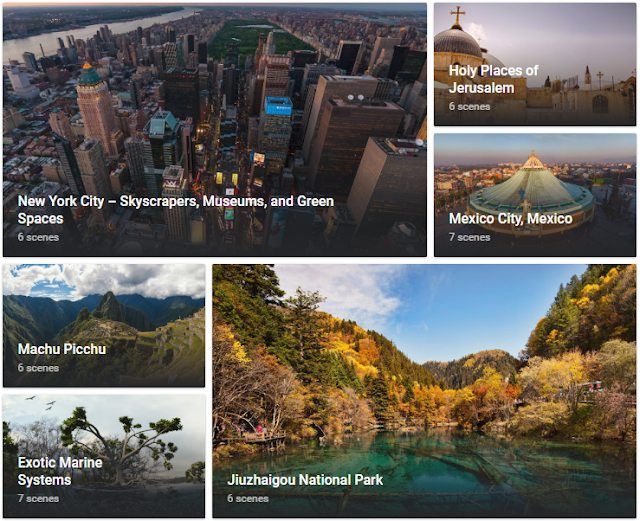Virtual Reality is so exciting for education. This format allows students to be transported anywhere they can imagine from the comfort of the classroom. Interactive locations, virtual field trips, and up-close learning about things that would otherwise be inaccessible, VR is something that can be incorporated into any subject across the board.
Some benefits of Virtual Reality in education are:
Improving Retention
Enriching Literacy
Placing Learning in Context
Supporting Specific Needs
Increasing Engagement
(Class VR 2020)
Not only can online collaborative learning be done from class to class in a communicative way, but it can also be done through VR and the multitude of educational apps becoming available. I chose to highlight two particular apps for Gear VR that I thought were interesting and useful in a classroom.

The first is Hold the World with David Attenborough. An interactive app where students walk through London’s Natural History Museum. Users are able to interact with artifacts in the museum with the legendary David Attenborough by their side to provide more detailed information on the selected object.
This app is amazing not only because it allows students to take a virtual field trip to a place they may never be able to go, but what sets this VR museum experience apart from even an in-person face to face one is the level of interaction. When you visit the London Natural History Museum in person, you get to see the artifacts in person, but everything is behind a rope or glass. With Hold The World, those artifacts that are behind the glass become tangible and interactive.
Students using this app also may be more likely to remain engaged in the activity not only because of the interaction, but the freedom a VR experience can give as well. Students are free to explore their digital worlds at their leisure and can explore their own interests in as much detail as the app allows.

With Tour Creator, students can use this tool to take virtual field trips to one of the many already existing tours or create one of their own. Students can shoot and supply their own 360 videos or use the already existing Google Maps imagery. From there, more icons can be created through the tour highlighting various things that the user encounters along the tour.
I really like the idea of using Tour Creator in a classroom setting and for possible assignments. Not only does it create a way to make learning visual by connecting the information being taught through text and lectures with real-world images, but it can also be used as a project to increase the absorption of information of a topic.
An example of a virtual connection being:
learning about the French Revolution and taking a virtual tour of Paris to find historically significant streets or buildings.
An example of use as a project:
Students have been reading autobiographies and will create a tour of someplace significant to their subject and their life as they read about it.

I am excited to be starting to be an educator as the world and tech around VR and AR starts to take off. There are so many ways VR can be used for education, and as we improve technologically, those will only increase.
If you are interested in more awesome VR apps for education, check out this Top 10 List!
I appreciate you sharing this blog article.Really thank you! Really Cool.